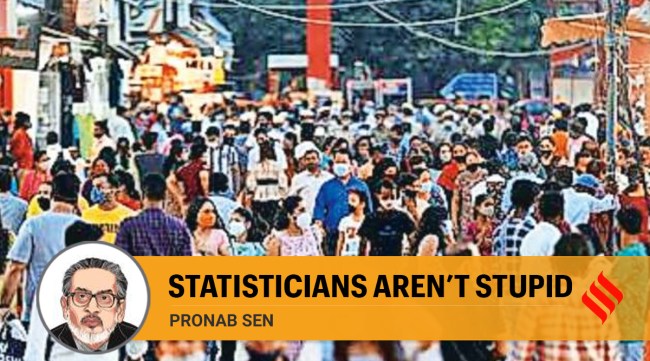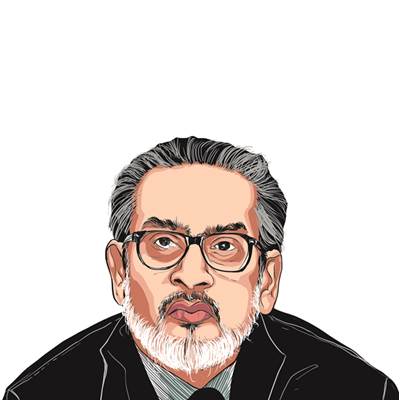Opinion Pronab Sen responds to Shamika Ravi: No, India’s statisticians aren’t stupid
Criticism of sample surveys is misplaced. Their data differ from Census count because definitions are different
 The Collection of Statistics Act has provisions which can compel compliance from the wealthy, but would you trust them to tell the truth? As they stand, the numbers are more reliable than people. (Representational Photo)
The Collection of Statistics Act has provisions which can compel compliance from the wealthy, but would you trust them to tell the truth? As they stand, the numbers are more reliable than people. (Representational Photo)
Are India’s statisticians merely stupid or is there something more sinister going on? This seems to be the sub-text of an article by Shamika Ravi that appeared recently in this newspaper (‘The sample is wrong’, IE, July 7). The substance of the piece is that the various sample surveys (NSS, NFHS, PLFS) that have been carried out in the country from 2011 onwards to measure important indicators of social and economic progress “grossly and systematically underestimate India’s progress and development and…impede policy-making”. As a result, the performance of the Narendra Modi government is both undermined and downgraded by a faulty statistical system.
This is a serious charge indeed, especially coming from a respected member of the Economic Advisory Council to the Prime Minister of India. There are two main points of criticism in Ravi’s analysis of data quality in Indian surveys. The first and most important is that all of them seriously overestimate the rural population of the country, and thereby underestimate the urban. As a consequence, if the levels and the rates of progress of these various indicators are better in urban areas than in rural, as Ravi clearly believes, then the national averages will always be lower in the estimates as compared to the ground reality. This is, of course, axiomatically true. However, it crucially rests on whether or not there is a systematic overestimation of the rural population by these surveys.
Ravi demonstrates that this is indeed the case by comparing the estimates of rural population from the surveys with those from the Census projections and showing that the discrepancy can be as high as 5 percentage points, which is substantial. What she does not seem to realise is that she is really comparing apples and oranges. Let me elaborate.
The Census measures urban population in two categories — (a) statutory towns/cities; and (b) Census towns. Statutory towns/cities are entities which are legally recognised as urban areas by the concerned state governments and are governed by municipalities/nagar palikas. Census towns, on the other hand, are legally rural areas, that is, coming under panchayats, which exhibit characteristics of urban agglomerates on three counts — size of the population, population density and proportion of the male workforce not engaged in agriculture. It so happens that in Census 2011, a major part of the rapid urbanisation that Ravi talks about occurred in Census towns and not in the statutory urban areas.
The surveys, on the other hand, follow only the statutory definition while classifying rural and urban areas. Thus, although all surveys use the Census as the sampling frame, Census towns are treated as a part of the rural sector and are included in the rural sample. Therefore, practically all the discrepancy that Ravi makes so much of is simply the outcome of differences in the definition of urban areas in the Census and the surveys.
This, then, raises the question of why do these agencies use different definitions. The answer lies in the objectives of these two data collection exercises. The Census identifies Census towns to assist state governments in identifying areas which should be given urban status and governance systems. The surveys are meant for designing and evaluating government schemes/programmes which are all based only on statutory classifications. Statisticians are really not all that stupid. The data they collect is driven by the use to which they will be put.
There is an interesting corollary to the above exposition. If, as Ravi clearly believes, Census towns have indicators similar to statutory urban areas and are, therefore, better than other rural areas, then logically the surveys would be overestimating rural well-being and progress. If we take the Census towns away from rural India and add them to urban India, then urban India would look the same as it does now, while rural India would look a lot worse. To come to Ravi’s point, it would mean that the current estimates actually favour rural India’s image, not the other way around. Correcting this would be a bitter pill for the government to swallow.
Now to Ravi’s second criticism that the response rate is systematically biased such that the wealthier people are less likely to respond to surveys. This is absolutely correct, and has been so for the last 50 years and has been increasing as we are becoming wealthier. As a consequence, the estimates will be, and indeed are, biased downwards, more in urban areas than in rural. There is not much that can be done about it except to replace them with a more responsive person of the same category, which is done. All countries have the same problem. The US, for instance, has a non-response rate of nearly 30 per cent as compared to India’s 8 per cent or so. The Collection of Statistics Act has provisions which can compel compliance from the wealthy, but would you trust them to tell the truth? As they stand, the numbers are more reliable than people.
The writer is a professional economist who was the first Chief Statistician of India





